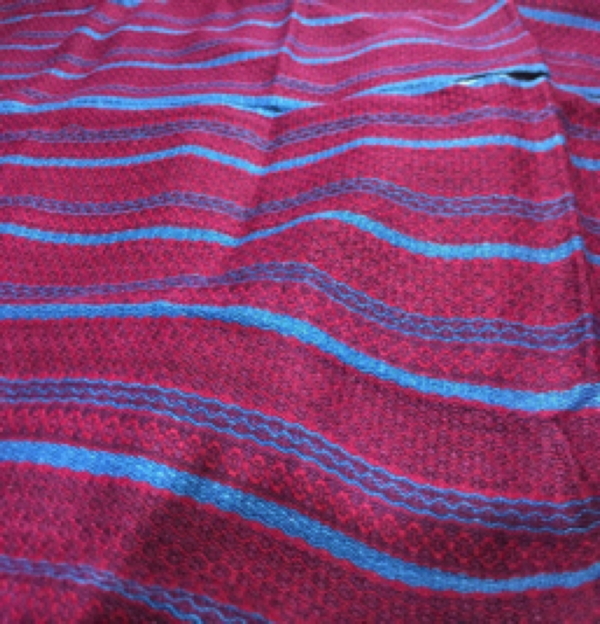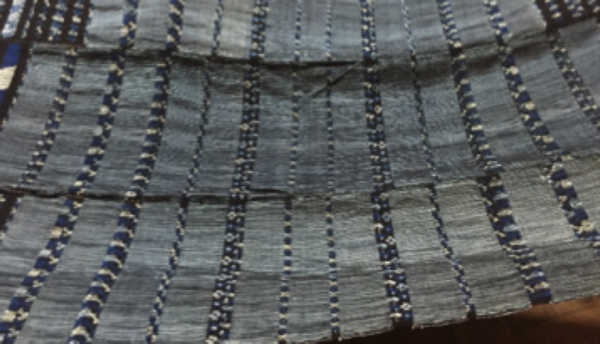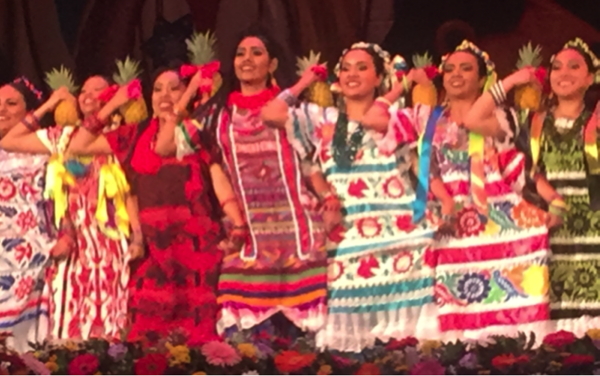The Oaxacan Textiles |
 | When offered: Every Friday at 4:00 pm
Included: guide
| |
|
Brief description of the tour: The objective of the tour is to comment on the male and female clothing used in the different communities of Oaxaca as a legacy of the Mesoamerican civilization. We will examine the distinction between the fibers and dyes used in Mesoamerica, New Spain and those imported by the Spanish, as well as the fibers and dyes used in this globalized world.
|

| Schedule: We start our tour in the Textile Museum, which always has temporary exhibitions that allow us to compare garments around the world. We continue in the Belber Museum, which has a large collection of huipiles, enredos, etc. Next, we will visit some specialty textile shops to comment on local textiles in the markets and finally we will visit the cathedral to comment on some religious textiles.
|
|

|
Background:
The state of Oaxaca is one of the richest in textiles. Some examples are the huipil, the enredo, the girdle, and some canvases to cover or transport loads are from pre-Hispanic times. Note that blouses, skirts and shawls were introduced after the conquest.
The Quechquemitl is a garment made up of two rectangles joined so that the garment's peaks fall in front and on the back like triangles.It is a characteristic garment of indigenous Mexican clothing but in Oaxaca, only certain godesses and priestesses could wear it.
|
Women's attire was more limited than men's. The basic garment was the enredo, indispensable throughout Mesoamerica and used from the Middle Preclassic until the arrival of the Spanish.
The most frequently used fibers were cotton and various hard fibers such as ixtle which was obtained from the leaves of different plants of the Agave genus.
|

|
The cotton grown in Egypt (mostly Barbadian cotton) is the highest quality and longest fiber. Its thread is thin and its fiber is longer than that of other varieties of cotton. The long fiber increases the quality of the yarn and the thin thread allows for a higher density of the fabric.
During the 19th century, Egypt became part of the world economy as a cotton exporter and it is clear that cotton had an important role to play in this transition towards an export economy.
The fabrics that circulated in the viceroyalty came from places as remote as China. An essential aspect of the sculpture from New Spain is its polychromy and in particular that which represents the clothing of the characters, which usually receives the generic name of stew. We can mention two types of New Hispanic textiles according to their use, and so we have civilians and liturgists.
Dowry cards are a very useful source of information about aspects of daily life, especially when it comes to the home. An essential part of what the woman carried with her to enter the marriage was white and colored clothing. For this reason, dowry cards constitute a rich source to know what types of textiles were found in New Hispanic houses, what were the common and daily use with which everyone was familiar. This in contrast to the liturgical textiles that were observed less frequently, many times from a distance and without the possibility of touching them.
The textiles that were part of the woman's dowry can be classified into three types: colored clothing (dresses, suits, footwear and cloaks), white clothing (the shirts) and material for the house or bed (aprons, sheets, pillowcases, bedspreads, hangings and tablecloths).
Glossary:
Textile: Anything made from fibers and yarns (fibers joined by spinning). Includes ropes, lace and nets.
Damask: High quality, guilloche silk fabric with a single warp and a single weft made up of threads of the same thickness and color and quality and with an interwoven pattern.
Enredo: a wraparound skirt made from two pieces of backstrap-loomed fabric sewn together
|
 |

|